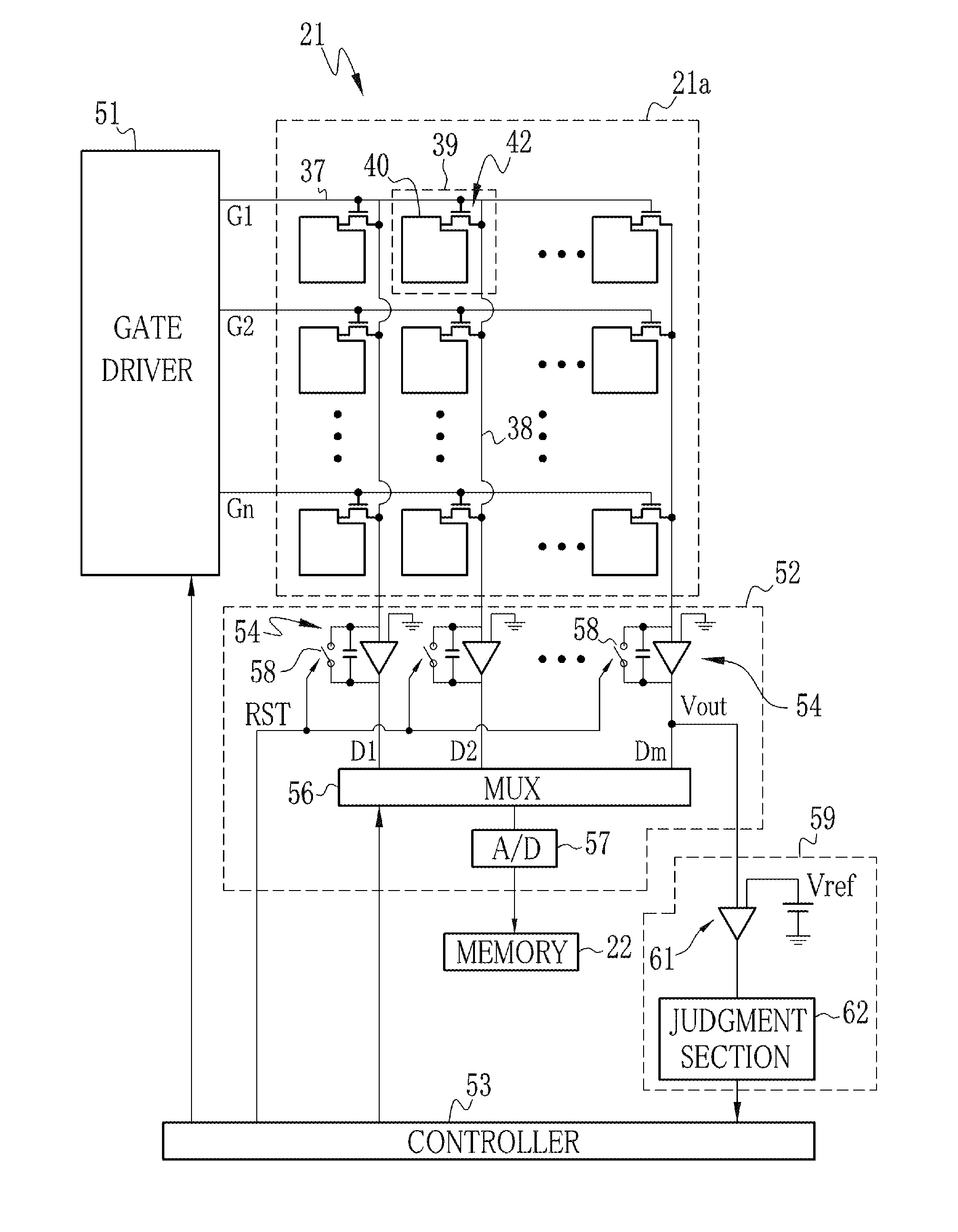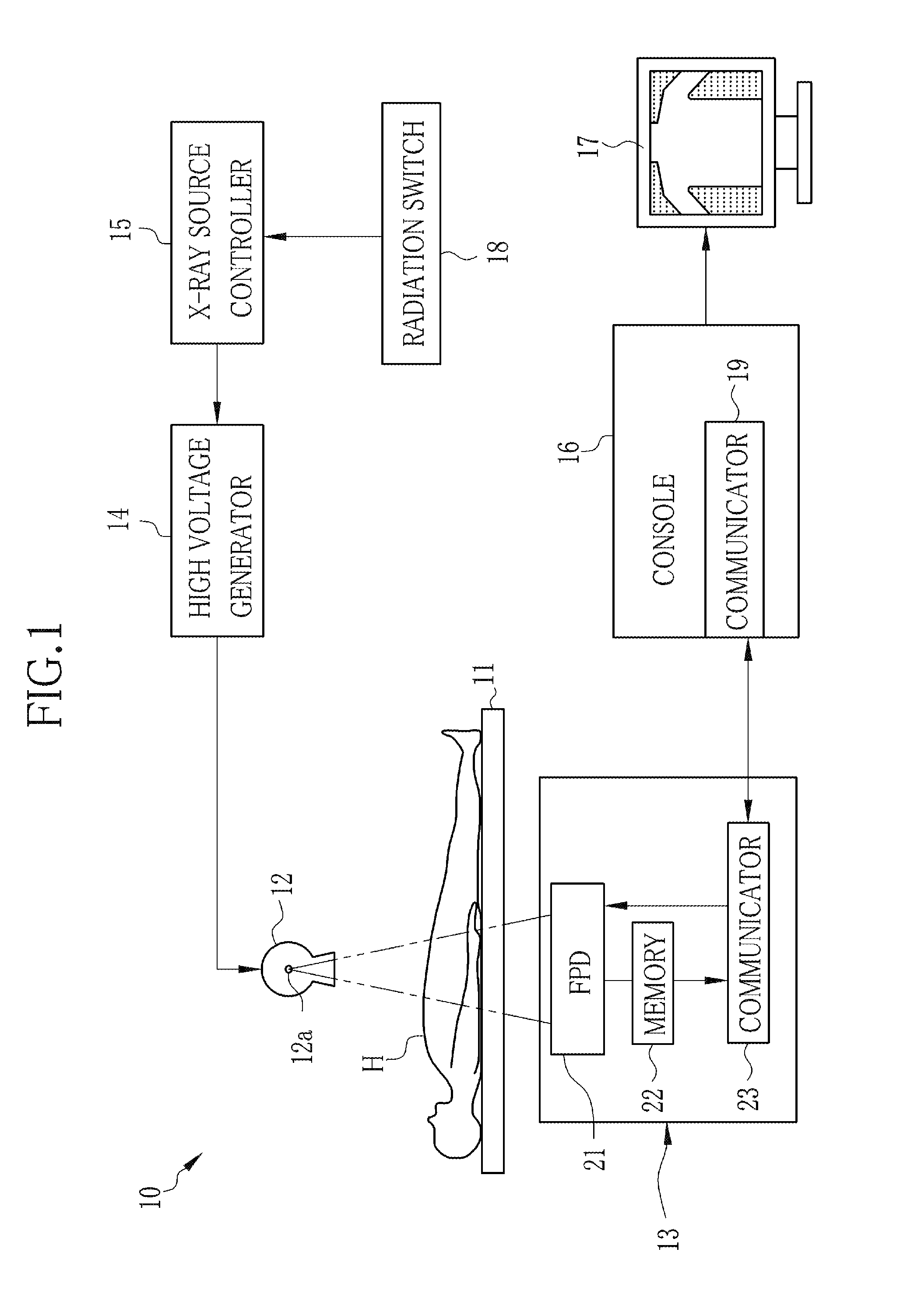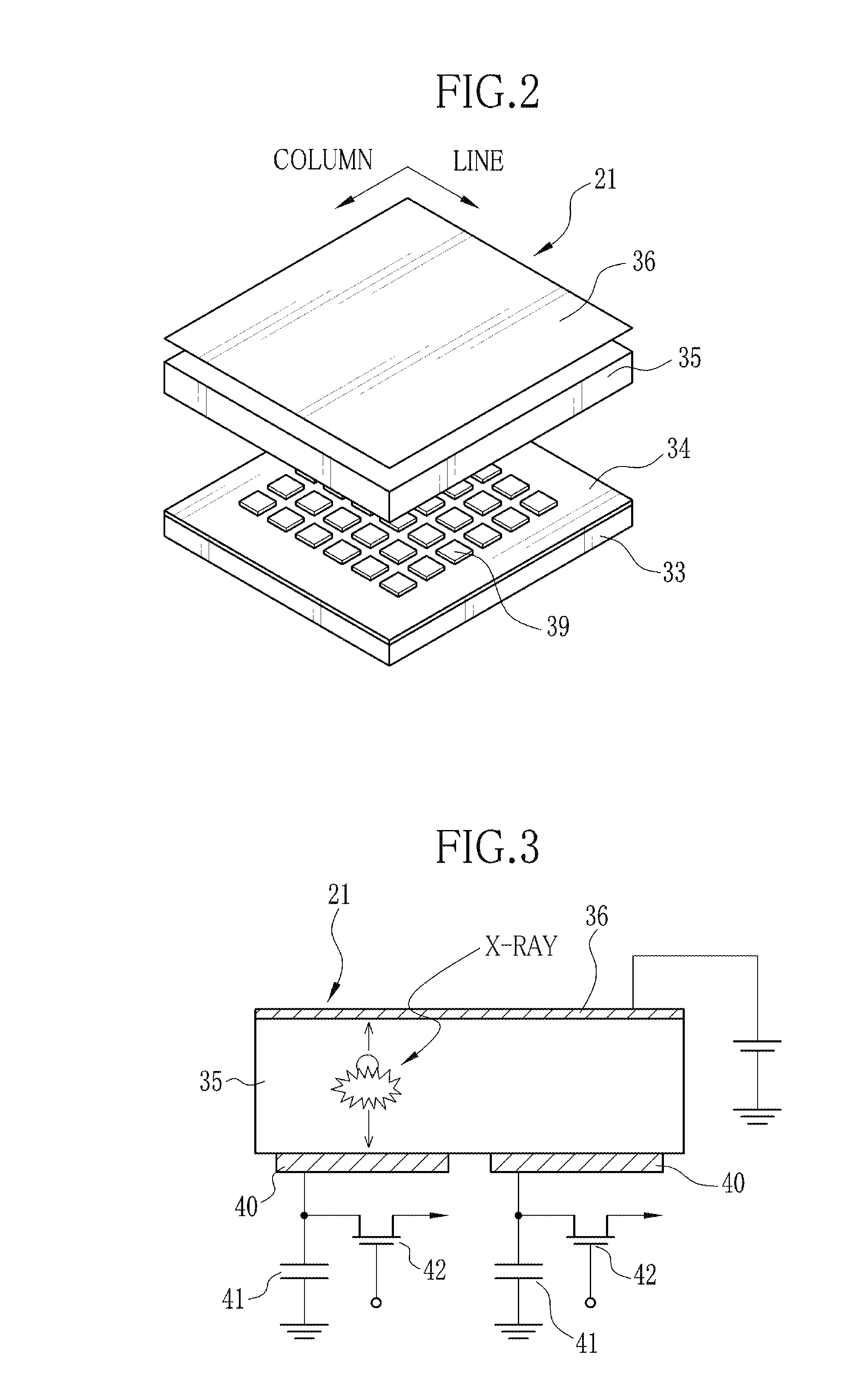Radiographic image detector
a detector and radiographic technology, applied in the field of radiographic image detectors, can solve the problems of image detectors that cannot detect x-ray images, serve imaging, and detection elements disposed outside the imaging area may be out of the irradiation rang
- Summary
- Abstract
- Description
- Claims
- Application Information
AI Technical Summary
Benefits of technology
Problems solved by technology
Method used
Image
Examples
first embodiment
[0040]In FIG. 1, an X-ray radiography system 10 includes a radiological examination table having a table top 11 for laying a test subject H thereon, an X-ray source 12 for radiating X-rays from an X-ray focus 12a toward the subject H, and a radiographic image detector 13 for detecting an X-ray image of the test subject H from the X-rays that have penetrated through the test subject H. The radiographic image detector 13 may be formed as an electronic cassette 13 that is removably attached to the radiological examination table. The x-ray light source 12 consists of an X-ray tube and a collimator for limiting the radiation field of the X-rays from the X-ray tube.
[0041]The X-ray radiography system 10 also includes a high voltage generator 14, an X-ray source controller 15, a console 16, and a monitor 17. The x-ray source controller 15 is fed with various imaging conditions such as tube voltage, tube current and radiation time, which may be input through a not-shown operation panel or th...
second embodiment
[0087]Meanwhile the console 16 processes the detected x-ray image data to eliminate such noises that result from the dark charges. Specifically, image data detected while no x-ray is radiated, hereinafter referred to as off-set image data, are previously memorized and subtracted from the detected x-ray image data, to eliminate the noises. The off-set image data may for example be such image data that represent the noises resulted from dark charges accumulated with the signal charges in the maximum radiation time. Accordingly, those dark charges accumulated from the start-of-radiation detecting operation to the start of x-ray radiation will not be reflected on the off-set image data. As a result, if the time from the start-of-radiation detecting operation to the start of x-ray radiation is too long, the noises caused by the dark charges cannot completely be eliminated using the off-set image data. To solve this problem, it is preferable to reset the pixels 39 to cancel the dark charg...
third embodiment
[0105]In the above first and second embodiments, the radiation detecting section 59 detects the start of x-ray radiation. In the following third embodiment, the end of x-ray radiation may be detected.
[0106]As shown in FIG. 10, in order to detect the end of x-ray radiation, the controller 53 inputs the reset pulses RST at constant intervals after the cassette 13 proceeds from the standby operation to the radiation detecting operation, like in the first or second embodiment, to reset the integrating amplifiers 54. When the radiation detecting section 59 detects the start of x-ray radiation (the time TA), the controller 53 however stops inputting the reset pulse RST, as indicated by arrows Pc1 and Pc2, so as not to withdraw the leak charges from the integrating amplifiers 54.
[0107]Since the reset pulse RST is not applied after the start of x-ray radiation is detected (the time TA), the output voltages Vout of the integrating amplifiers 54 continue to increase mainly because of the leak...
PUM
 Login to View More
Login to View More Abstract
Description
Claims
Application Information
 Login to View More
Login to View More - R&D
- Intellectual Property
- Life Sciences
- Materials
- Tech Scout
- Unparalleled Data Quality
- Higher Quality Content
- 60% Fewer Hallucinations
Browse by: Latest US Patents, China's latest patents, Technical Efficacy Thesaurus, Application Domain, Technology Topic, Popular Technical Reports.
© 2025 PatSnap. All rights reserved.Legal|Privacy policy|Modern Slavery Act Transparency Statement|Sitemap|About US| Contact US: help@patsnap.com



